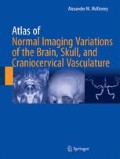Abstract
The pituitary gland arises from the ectoderm but has two separate components both embryologically and functionally: the anterior lobe (adenohypophysis) and the posterior lobe (neurohypophysis). The adenohypophysis arises from the Rathke pouch, which represents an upward invagination of the oral ectoderm; the adenohypophysis is also called the anterior lobe and secretes a number of important endocrine hormones (under direction from the hypothalamus) for growth, fertility, lactation, and to respond to biological stress. The neurohypophysis represents a downward protrusion of the neural ectoderm from the diencephalon/hypothalamus; the neurohypophysis is also called the posterior lobe, which secretes hormones (also under direction from the hypothalamus) that regulate water absorption/resorption and uterine contractions. Between the anterior and posterior lobes lies the pars intermedia (the intermediate lobe), which is rudimentary and only vestigial in humans. Occasionally, Rathke cleft cysts (also known as pars intermedia cysts) form in this site as a result of incomplete regression of this lobe.
Access this chapter
Tax calculation will be finalised at checkout
Purchases are for personal use only
Suggested Reading
Ahmadi H, Larsson EM, Jinkins JR. Normal pituitary gland: coronal MR imaging of infundibular tilt. Radiology. 1990;177:389–92.
Aho CJ, Liu C, Zelman V, Couldwell WT, Weiss MH. Surgical outcomes in 118 patients with Rathke cleft cysts. J Neurosurg. 2005;102:189–93.
Amhaz HH, Chamoun RB, Waguespack SG, Shah K, McCutcheon IE. Spontaneous involution of Rathke cleft cysts: is it rare or just underreported? J Neurosurg. 2010;112:1327–32.
Barrow DL, Spector RH, Yakei Y, Tindall GT. Symptomatic Rathke cleft cysts located entirely in the suprasellar region: review of diagnosis, management, and pathogenesis. Neurosurgery. 1985;16:766–72.
Bergland RM, Ray BS, Torack RN. Anatomical variations in the pituitary gland and adjacent structures in 225 human autopsy cases. J Neurosurg. 1968;28:93–9.
Bonneville JF, Cattin F, Moussa-Bacha K, Portha C. Dynamic computed tomography of the pituitary gland: the “tuft sign.”. Radiology. 1983;149:145–8.
Bonneville JF, Cattin F, Gorczyca W, Hardy J. Pituitary microadenomas: early enhancement with dynamic CT—implications of arterial blood supply and potential importance. Radiology. 1993;187:857–61.
Brisman R. Endocrine studies with empty sella. J Neurosurg. 1973;38:537.
Busch W. Morphology of sella turcica and its relation to the pituitary gland. Virchows Arch. 1951;320:437–58.
Buchfelder M, Brockmeier S, Pichl J, Schrell U, Fahlbusch R. Results of dynamic endocrine testing of hypothalamic pituitary function in patients with a primary “empty” sella syndrome. Horm Metab Res. 1989;21:573–6.
Chanson P, Daujat F, Young J, Bellucci A, Kujas M, Doyon D, Schaison G. Normal pituitary hypertrophy as a frequent cause of pituitary incidentaloma: a follow-up study. J Clin Endocrinol Metab. 2001;86:3009–15.
De Marinis L, Bonadonna S, Bianchi A, Maira G, Giustina A. Primary empty sella. J Clin Endocrinol Metab. 2005;90:5471–7.
Dietrich RB, Lis LE, Greensite FS, Pitt D. Normal MR appearance of the pituitary gland in the first 2 years of life. Am J Neurolradiol. 1995;16:1413–9.
Dinc H, Esen F, Demirci A, Sari A, Resit Gümele H. Pituitary dimensions and volume measurements in pregnancy and post partum. MR Assessment. Acta Radiol. 1998;39:64–9.
Ezzat S, Asa SL, Couldwell WT, Barr CE, Dodge WE, Vance ML, McCutcheon IE. The prevalence of pituitary adenomas: a systematic review. Cancer. 2004;101:613–9.
Foresti M, Guidali A, Susanna P. Primary empty sella. Incidence in 500 asymptomatic subjects examined with magnetic resonance. Radiol Med. 1991;81:803–7.
Guitelman M, Garcia Basavilbaso N, Chervin A, Katz D, Miragaya K, et al. Primary empty sella (PES): a review of 175 cases. Pituitary. 2013;16:270–4.
Hayakawa K, Konishi Y, Matsuda T, Kuriyama M, Konishi K, Yamashita K, et al. Development and aging of brain midline structures: assessment with MR imaging. Radiology. 1989;172:171–7.
Hayashi Y, Tachibana O, Muramatsu N, Tsuchiya H, Tada M, Arakawa Y, et al. Rathke cleft cyst: MR and biomedical analysis of cyst content. J Comput Assist Tomogr. 1999;23:34–8.
Ishikawa S, Furuse M, Saito T, Okada K, Kuzuya T. Empty sella in control subjects and patients with hypopituitarism. Endocrinol Jpn. 1988;35:665–74.
Kucharczyk W, Peck WW, Kelly WM, Norman D, Newton TH. Rathke cleft cysts: CT, MR imaging, and pathologic features. Radiology. 1987;165:491–5.
Krzysiek J, Gregorczyk A. Hypophysis volume in computerized tomography and clinical grounds for diagnosing a primary completely empty sella turcica. Przegl Lek. 1990;47:637–41.
Lees PD, Fahlbusch R, Zrinzo A, Pickard JD. Intrasellar pituitary tissue pressure, tumour size and endocrine status – an international comparison in 107 patients. Br J Neurosurg. 1994;8:313–8.
Molitch ME. Pituitary tumours: pituitary incidentalomas. Best Pract Res Clin Endocrinol Metab. 2009;23:667–75.
Nemoto Y, Inoue Y, Fukuda T, Shakudo M, Katsuyama J, Hakuba A, et al. MR appearance of Rathke’s cleft cysts. Neuroradiology. 1988;30:155–9.
Sanno N, Oyama K, Tahara S, Teramoto A, Kato Y. A survey of pituitary incidentaloma in Japan. Eur J Endocrinol. 2003;149:123–7.
Sakamoto Y, Takahashi M, Korogi Y, Bussaka H, Ushio Y. Normal and abnormal pituitary glands: gadopentetate dimeglumine-enhanced MR imaging. Radiology. 1991;178:441–5.
Shanklin WM. On the presence of cysts in the human pituitary. Anat Rec. 1949;104:399–407.
Simmons GE, Suchnicki JE, Rak KM, Damiano TR. MR imaging of the pituitary stalk: size, shape, and enhancement pattern. Am J Roentgenol. 1992;159:375–7.
Takanashi J, Suzuki H, Nagasawa K, Kobayashi K, Saeki N, Kohno Y. Empty sella in children as a key for diagnosis. Brain Dev. 2001;23:422–3.
Tsunoda A, Okuda O, Sato K. MR height of the pituitary gland as a function of age and sex: especially physiological hypertrophy in adolescence and in climacterium. Am J Neurolradiol. 1997;18:551–4.
Wolpert SM, Osborne M, Anderson M, Runge VM. The bright pituitary gland – a normal MR appearance in infancy. Am J Neurolradiol. 1988;9:1–3.
Zucchini S, Ambrosetto P, Carlà G, Tani G, Franzoni E, Cacciari E. Primary empty sella: differences and similarities between children and adults. Acta Paediatr. 1995;84:1382–5.
Author information
Authors and Affiliations
Rights and permissions
Copyright information
© 2017 Springer International Publishing Switzerland
About this chapter
Cite this chapter
McKinney, A.M. (2017). Pituitary Variations, Artifacts, Primary Empty Sella, and Incidentalomas. In: Atlas of Normal Imaging Variations of the Brain, Skull, and Craniocervical Vasculature . Springer, Cham. https://doi.org/10.1007/978-3-319-39790-0_8
Download citation
DOI: https://doi.org/10.1007/978-3-319-39790-0_8
Published:
Publisher Name: Springer, Cham
Print ISBN: 978-3-319-39789-4
Online ISBN: 978-3-319-39790-0
eBook Packages: MedicineMedicine (R0)

